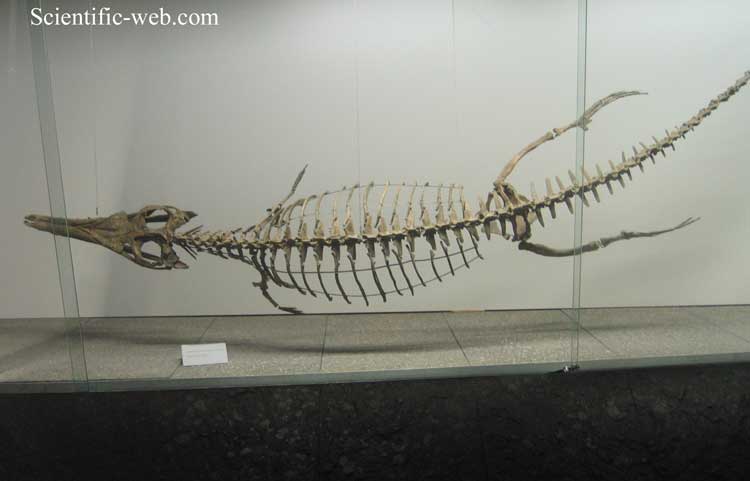[Recent Entries][Archive][Friends][User Info]
| May 3rd, 2012 | |
|---|---|
| 06:51 pm [industrialterro] [Link] |
Metriorhynchus Metriorhynchus is an extinct genus of marine crocodyliform that lived in the oceans during the Middle to Late Jurassic. Metriorhynchus was named by the German palaeontologist Christian von Meyer in 1830. Metriorhynchus was a carnivore that spent much, if not all, its life out at sea. No Metriorhynchus eggs or nests have been discovered, so little is known of the reptile's lifecycle, unlike other large marine reptiles of the Mesozoic, such as plesiosaurs or ichthyosaurs which are known to give birth to live young out at sea. Where Metriorhynchus mated, whether on land or at sea, is currently unknown. The name Metriorhynchus means "Moderate snout", and is derived from the Greek Metrio- ("moderate") and -rhynchos ("snout"). Fossil specimens referrable to Metriorhynchus are known from Middle-Late Jurassic deposits of England, France and Germany. Species in this genus are traditionally classed into two skull groups: longirostrine (long, narrow jaws) and brevirostrine (short, broad jaws). However there has been some contention as to how many of these species are valid, especially those from the Callovian. All brevirostrine species have been transferred to the genera: Purranisaurus and Suchodus. Eudes-Deslongchamps (1867–69) found there to be four Callovian species: M. superciliosus, M. moreli, M. blainvillei, and M. brachyrhynchus. Andrews (1913) considered there to be seven valid species: M. superciliosus, M. moreli, M. brachyrhynchus, M. durobrivensis, M. cultridens, M. leedsi and M. laeve. Adams-Tresman (1987) using linear morphometrics however could only distinguish between the two skull groups, so she found there to be two species: M. superciliosus and M. brachyrhynchus. Vignaud (1997) however, considered there to be three Callovian species: M. superciliosus, M. brachyrhynchus and M. leedsi. M. superciliosus: Western Europe (England, France and Germany) of the Middle-Late Jurassic (Callovian and Oxfordian); M. moreli, M. blainvillei, and M. jaekeli are junior synonyms. M. hastifer: Western Europe (France) of the Late Jurassic (Kimmeridgian) M. geoffroyii: (type species) Western Europe (England, France and Switzerland) of the Late Jurassic (Kimmeridgian); M. palpebrosus, and M. temporalis are junior synonyms. Two longirsotrine species, M. acutus and M. leedsi have been referred to the genus Gracilineustes. Fragmentary remains of Metriorhynchus are known from South America during the Bajocian and Bathonian (both Middle Jurassic). However, phylogenetic analysis has shown neither of these species can be referred to Metriorhynchus. The genera Purranisaurus and Suchodus have been considered junior synonyms of Metriorhynchus, Recent phylogenetic analyses however, do not support the monophyly of Metriorhynchus. Some of the longirostrine forms, however, do appear to form a natural group. The cladogram presented below follows an analysis by Mark Young and Marco Brandalise de Andrade, published in November 2009. Averaging 3 metres (9.8 ft) in length, Metriorhynchus was of a similar size to modern crocodiles. However, it had a streamlined body and a finned tail, making it a more efficient swimmer than modern crocodilian species. Recent examination of the fossil specimens of Metriorhynchus superciliosus, have shown that adults of this species had well-developed salt glands. This means that like Geosaurus it would have been able to "drink" salt-water (necessary for a pelagic animal) and eat prey that have the same ionic concentration as the surrounding sea water (i.e. cephalopods) without dehydrating. Metriorhynchus was a versatile and opportunistic predator, predated upon both the armoured belemnites, fast moving fish and the giant filter feeding fish Leedsichthys. Occasionally it was also capable of capturing flying animals such as the pterosaurs and scavenging on plesiosaur carcasses on the seafloor. Even though Metriorhynchus was an effective predator, it was vulnerable to predation from apex predators such as Liopleurodon which could grow in excess of 10 meters in length. Since Metriorhynchus had lost its osteoderms, "Armour scutes", to become more efficient swimmers it would have had little defense against larger marine predators.
Репродукции (1, 2, 3, 4, 5, 6, 7, 8):
Ископаемые останки (1, 2, 3, 4, 5):
Tags: Вымершие рептилии, Юра, архозавроморфы, архозавры, диапсиды, крокодиломорфы, круротарзы, мезоэукрокодилии, метриоринхиды, равизухии, талаттозухии |











